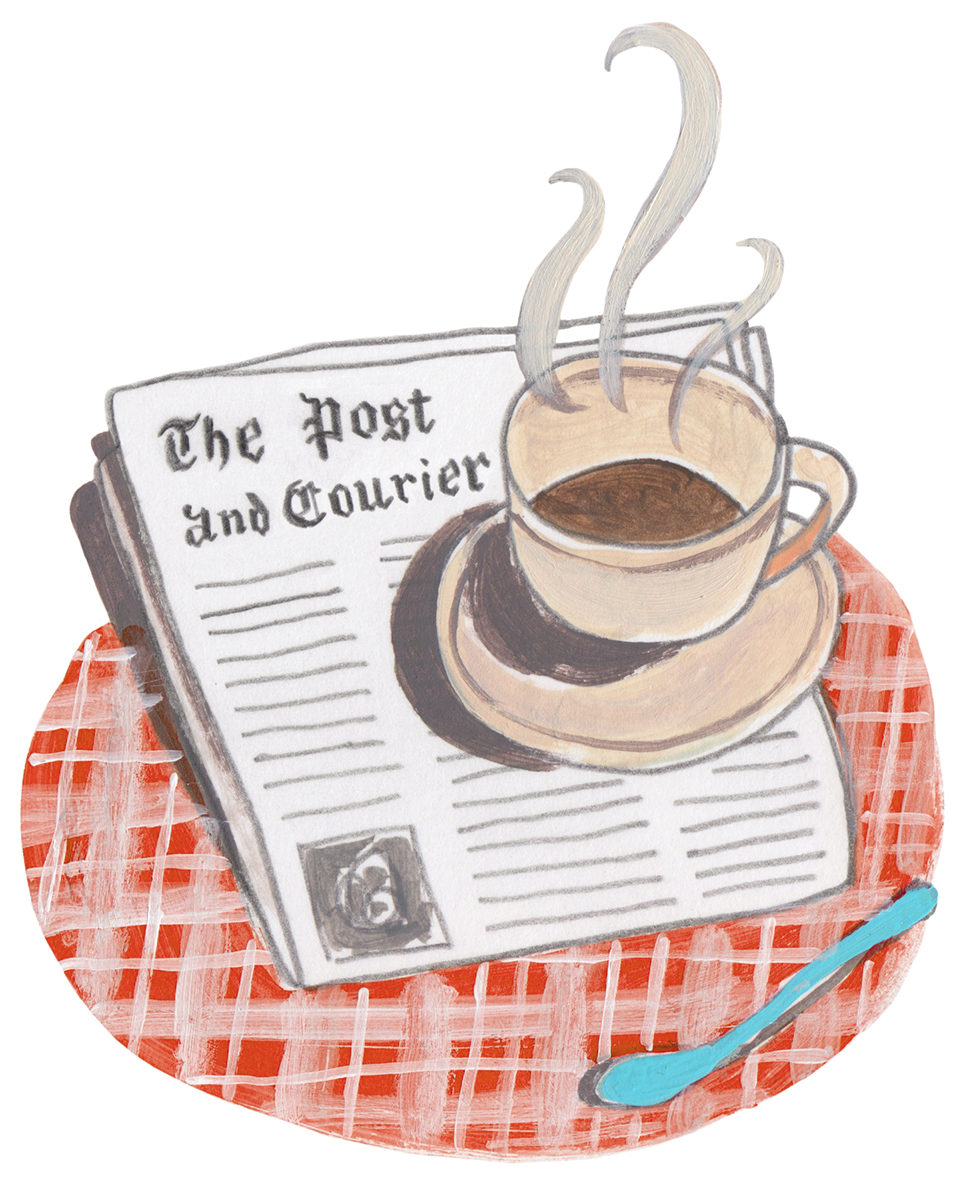Sign up for The Media Today, CJR’s daily newsletter.
We asked well-known journalists to tell us about the hometown papers that informed their youths, influenced their work, and helped define what they think about when they hear the word “newspaper.”
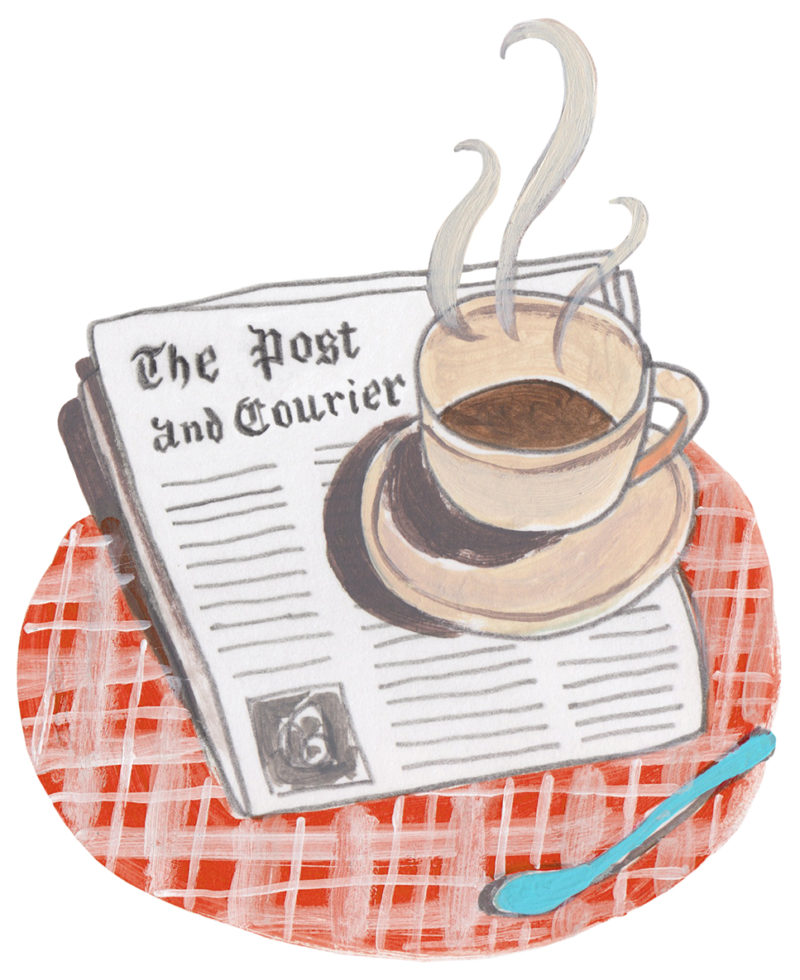
Illustration by Mariko Jesse
Michael LaForgia
Investigative Reporter, The New York Times
When I was growing up in the South Carolina Lowcountry, my local paper, The (Charleston) Post and Courier, carried groundbreaking coverage of the Susan Smith case, in which a troubled mother drowned her two toddlers and then lied to cover it up; the breaking down of gender barriers at the storied Citadel military college; and sex abuse in the local Catholic diocese. They were the types of stories that later, after I became a reporter, I would have killed to have been a part of. I wasn’t aware of any of it at the time. Like many other people before and since, I didn’t give the local paper the credit it deserved. I did, however, have one faithful ritual: Almost every fall Saturday, I would stand on my back porch, pick up the unread paper, this remarkable thing that scores of talented people had worked so hard to deposit on my parents’ doorstep, and stuff it page by page into my sodden football cleats—hoping like hell it would dry them out by Monday.
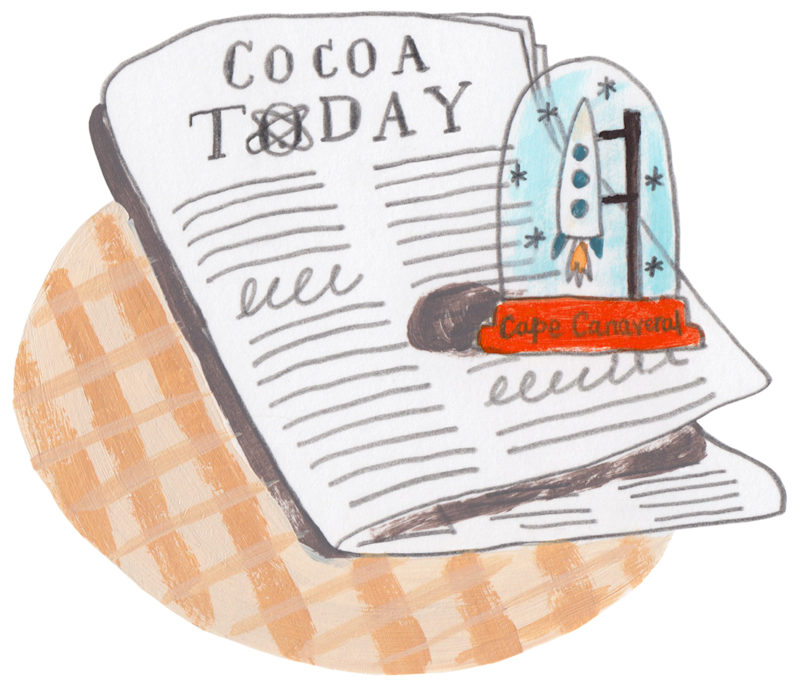
Illustration by Mariko Jesse
Dexter Filkins
Staff Writer, The New Yorker
Comic books aside, my local paper was the first thing I ever read on my own. I grew up in Cape Canaveral, Florida, which didn’t have its own daily, but Cocoa Today, printed across the causeways 20 miles away, landed on our driveway every morning. I started with the daily fishing forecast; that was all. I was about 10 years old. It was a paragraph printed each morning on the bottom of the sports page. Some days snook were running; some days wahoo; some days nothing. For a boy with a boat, that fishing report was a treasure map. Not long after, my eyes wandered to the rest of the sports page, starting with the scores from last night’s ballgame. High school ballgames, that is. For a time, we subscribed to the Miami Herald, which had the audacity to offer an edition nearly three-hundred miles from its homebase; it had to go to press so early that most scores didn’t come in until days later. I started reading the A-section as a fifth-grader, mostly the disaster briefs: A bus crash in Bangladesh kills 80; a soccer riot in Brazil kills 17. At some point, I’m sure not sure when, I became a fanatic, gobbling up editorials, local news, horoscopes, Dear Abby, and recipes for barbecue. Strangely, as a kid, I never read anything else. I was a terrible student. Which is why, I think, some years later, when I applied for a job as a reporter at Cocoa Today, they had the good sense to turn me down.
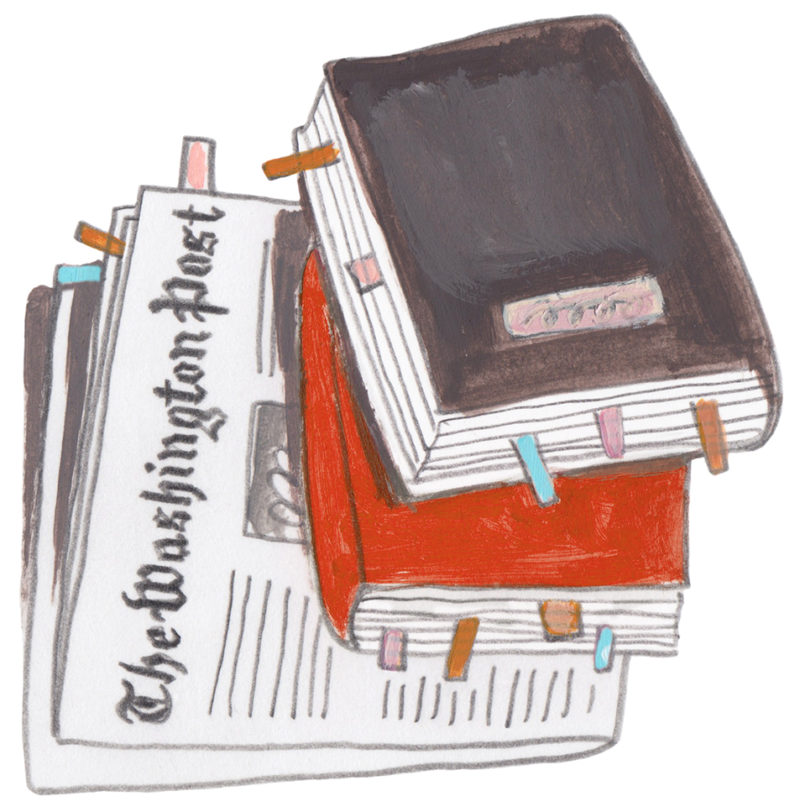
Illustration by Mariko Jesse
Lauren Williams
Executive Editor, Vox
My hometown paper was The Washington Post—my parents were subscribers and serious readers. They would tuck the front page and the Metro and Sports sections into their briefcases to read on their commutes. What was often left for me and my sisters was Style, which I absolutely loved, even as an elementary schooler. It made me feel very sophisticated to read about the arts scene in the city, Desson Thomson’s wonderful reviews of films I wasn’t allowed to see, and, most of all, the Reliable Source gossip column. There’s no way I knew who most of the people I was reading about were, but as a result of my dedicated reading I boasted a deep and impressive knowledge of ’90s DC society gossip for a 10-year-old suburban kid. On the first day of my journalism master’s program, about a decade later, the professor asked us why we wanted to be journalists. I answered, “the Style section of The Washington Post.” I ultimately followed a more general news career path, but those childhood mornings, flipping through my favorite section of my hometown paper while I sipped my orange juice, were when I first got the bug.
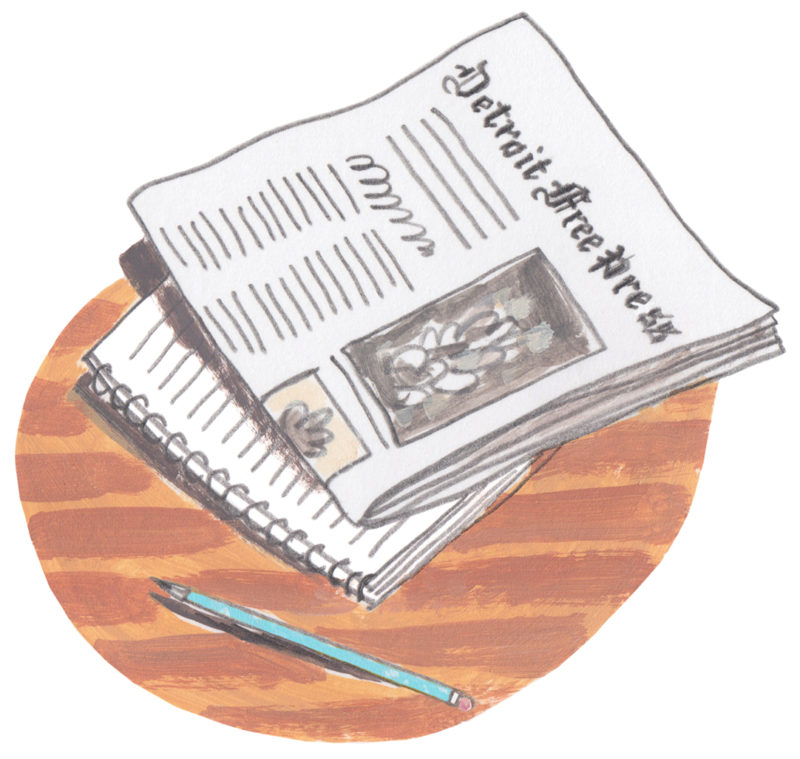
Illustration by Mariko Jesse
Don Gonyea
Correspondent, NPR
I was just a kid when I fell in love with the Detroit Free Press of the 1960s. For me it started at church. The whole family—my parents and eight siblings—would head to St. Mary’s in smalltown Monroe, Michigan, about 45 minutes south of Detroit. At the end of Sunday morning mass, my dad would give me 35 cents, and I’d race out to the sidewalk where a teenager stood behind a stack of papers, selling them to parishioners headed to their cars or to Sunday brunch. He sold The (Toledo) Blade, the Detroit News, and the Detroit Free Press. The Free Press was our paper. It was a responsibility I took very seriously. Scouring that newspaper—and all it contained—was the highlight of my day. Back home, as my mom fixed breakfast for the gang, I’d spread the pages out on the floor and get lost in the coverage of the Detroit Tigers, the news from the paper’s domestic and foreign bureaus (the Free Press had many of both back then), and especially the photographs from the likes of the legendary Tony Spina. I read every section, from the comics and a special kids crossword puzzle they had back then to the local and syndicated columnists on the opinion page. I followed presidential races, the Vietnam War and war protests, and the Civil Rights Movement. The Sunday Detroit Free Press of my youth was my most trusted guide. I would later come to appreciate what a great place the Free Press was for writers to work—and would come to have many friends who worked there. But as a kid not yet 10, the Free Press started a relationship with newspapers and the news that led to a career and more.
ICYMI: 11 images that show how the Trump administration is failing at photography
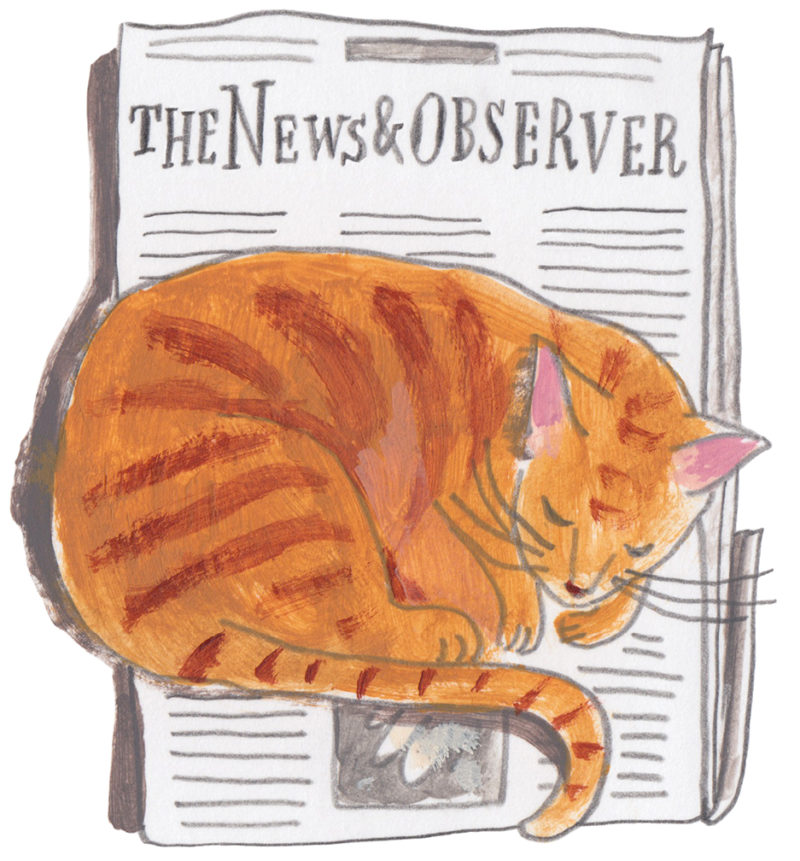
Illustration by Mariko Jesse
Marco Werman
Host, PRI (The World)
I was one of those kids who, with my age still in single digits, knew what I wanted to be for the rest of my life: a journalist. My godfather, a documentary filmmaker, had shown me his ability to knock on any door, anywhere in the world, cold-call any number, and ask questions. I wanted that. With Watergate, Carl Bernstein became something of a role model: I knew he started as a copy-boy in high school at The Washington Post. My daily in Raleigh, North Carolina, The News & Observer, was where I would try to land my copy-boy gig in high school. And at 16, I did. For three years, my local paper was where I headed after school four days a week. I had my corner of the newsroom, and from there I’d tear copy from the AP and UPI teletypes, shuttle them to the proper editors, write the occasional header, research photos in the library, chat with the nighttime cop-shop reporters just back from the police department, and haul up first editions from the presses in the basement to the newsroom on three before heading home sometime around midnight. It was the best training I would ever have in the news business. My first month there, I got to break the news to the national desk that a pope and Elvis had died. It was my local paper that got me hooked on the business. To this day, I still see the posters dotted around the N&O newsroom declaring: “Get it first, but get it right.”
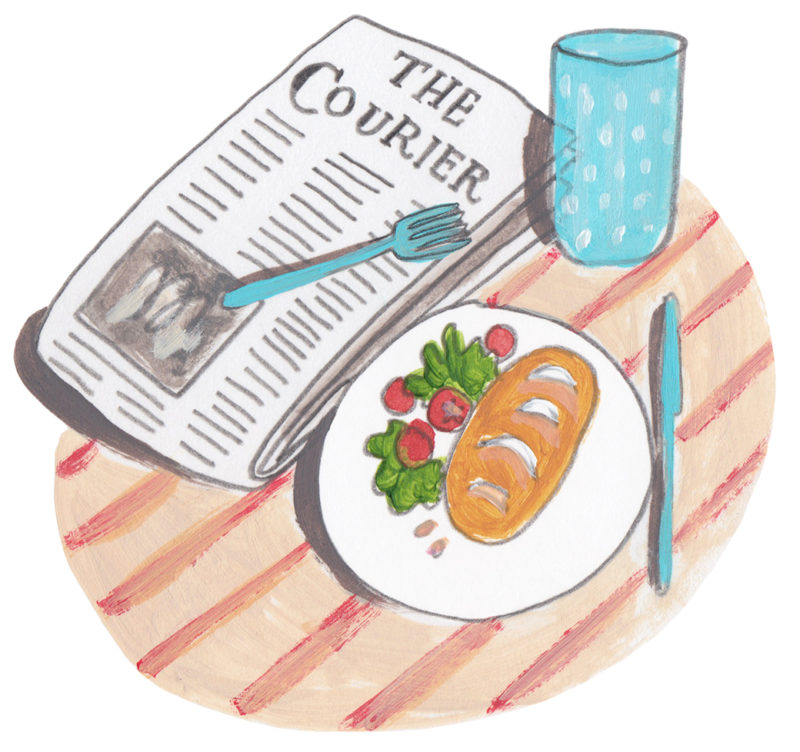
Illustration by Mariko Jesse
Nikole Hannah-Jones
Reporter, The New York Times Magazine
We were always a two-newspaper home. Every day, we got our hometown paper—back then it was called the Waterloo Courier—delivered, and my dad would also pick up a copy of the Des Moines Register at the cigar store downtown. The Courier landed on our porch in the afternoon (for a few years I had a paper route) and when my dad got home from work, he would sit on the couch, the television on in the background, and flip through the pages. I would sit next to him, reading sections as he finished them. When I was very young, my favorite day was Sunday, because there would be an insert just for kids with features and puzzles and cool illustrations. I loved the feel of the paper and the way it exposed me to people and places and ideas. But as I got a little older, I started to feel uncomfortable with the way my paper depicted the people of my community. Waterloo was about 15 percent black—the largest black population in Iowa—and we lived in a segregated part of town. It seemed to me that the Courier only wrote about people like me if we’d been accused of a crime, and outside of that, we were altogether invisible. That really bothered me because I understood, even then, that the paper wasn’t serving its community as it should. I wrote one of my first letters to the editor expressing this frustration when I was a middle school student. Seeing my words printed in the Courier’s pages showed me the power of having a voice, and helped me understand that I could do something to make the news better by becoming a journalist myself.
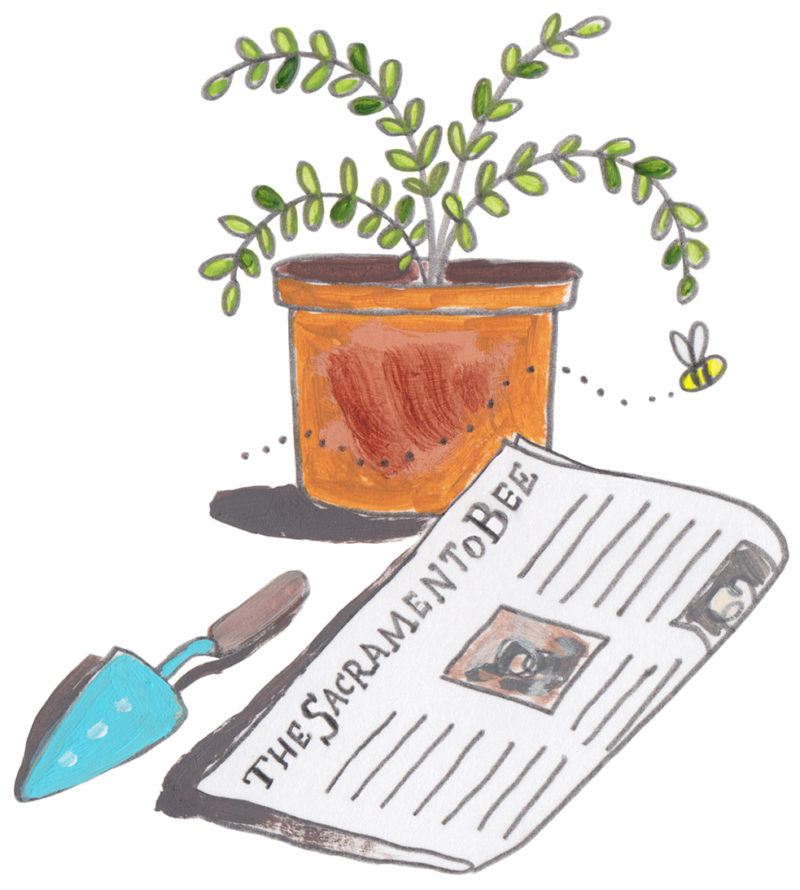
Illustration by Mariko Jesse
Erin Ailworth
Energy Beat Reporter, The Wall Street Journal (in Houston)
Like most kids, I first started flipping through the newspaper to get to the comic strips. Luann, Calvin & Hobbes, Garfield—those were my morning must-reads. My first notion of a newspaper as something more than a vehicle for the funnies came when I was 7 and a relative asked me to read aloud from an article in The Sacramento Bee. As the words left my mouth, something clicked. The article, I realized, was a story just like the ones I sometimes wrote at the direction of my second-grade teacher, Mrs. Mahoney—but it was even better for being true. I’m pretty sure I didn’t know the word “journalist” then. Thanks to the comics, however, I did know that Spiderman and Superman worked for newspapers. At that moment, I somehow knew I wanted to as well. With a 7-year-old’s logic, maybe I figured writing for a newspaper just might turn me into a superhero.
ICYMI: A graphic that shows how much local news is suffering
Has America ever needed a media defender more than now? Help us by joining CJR today.



